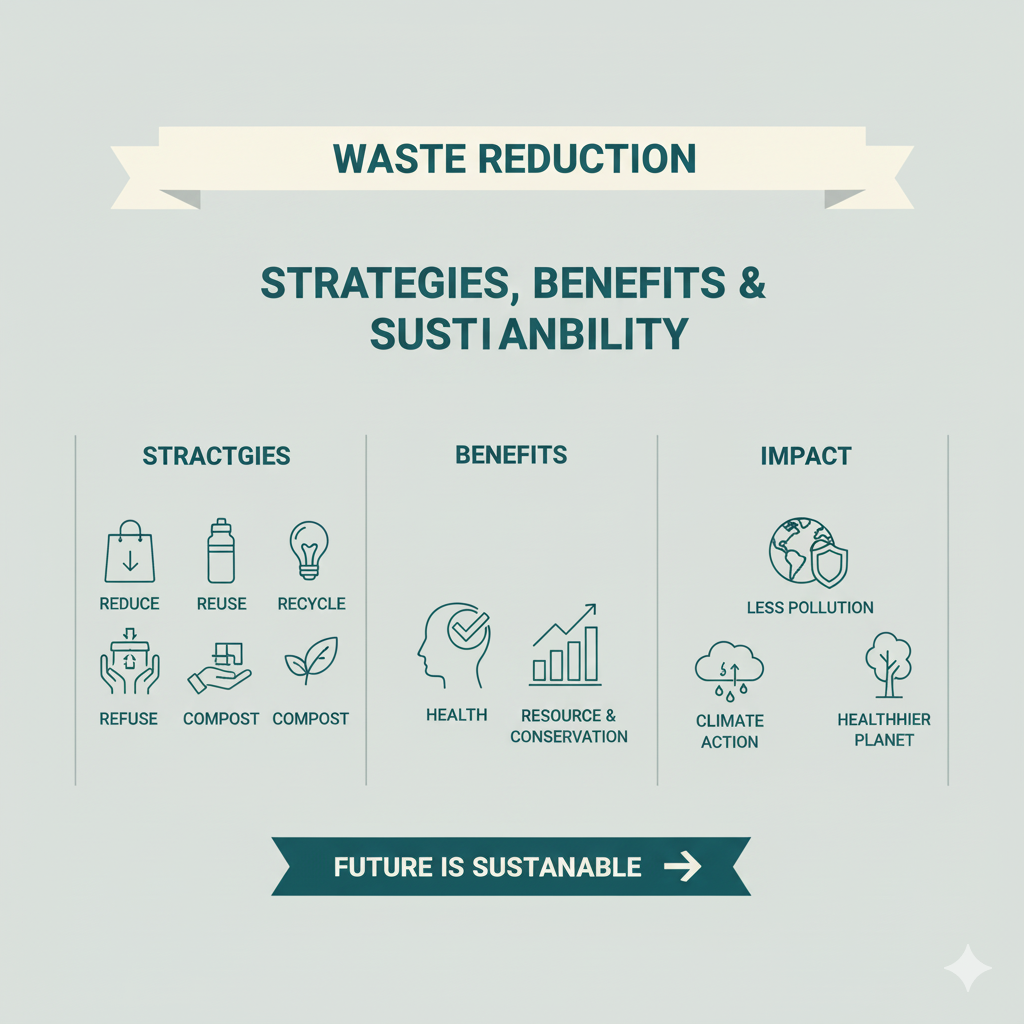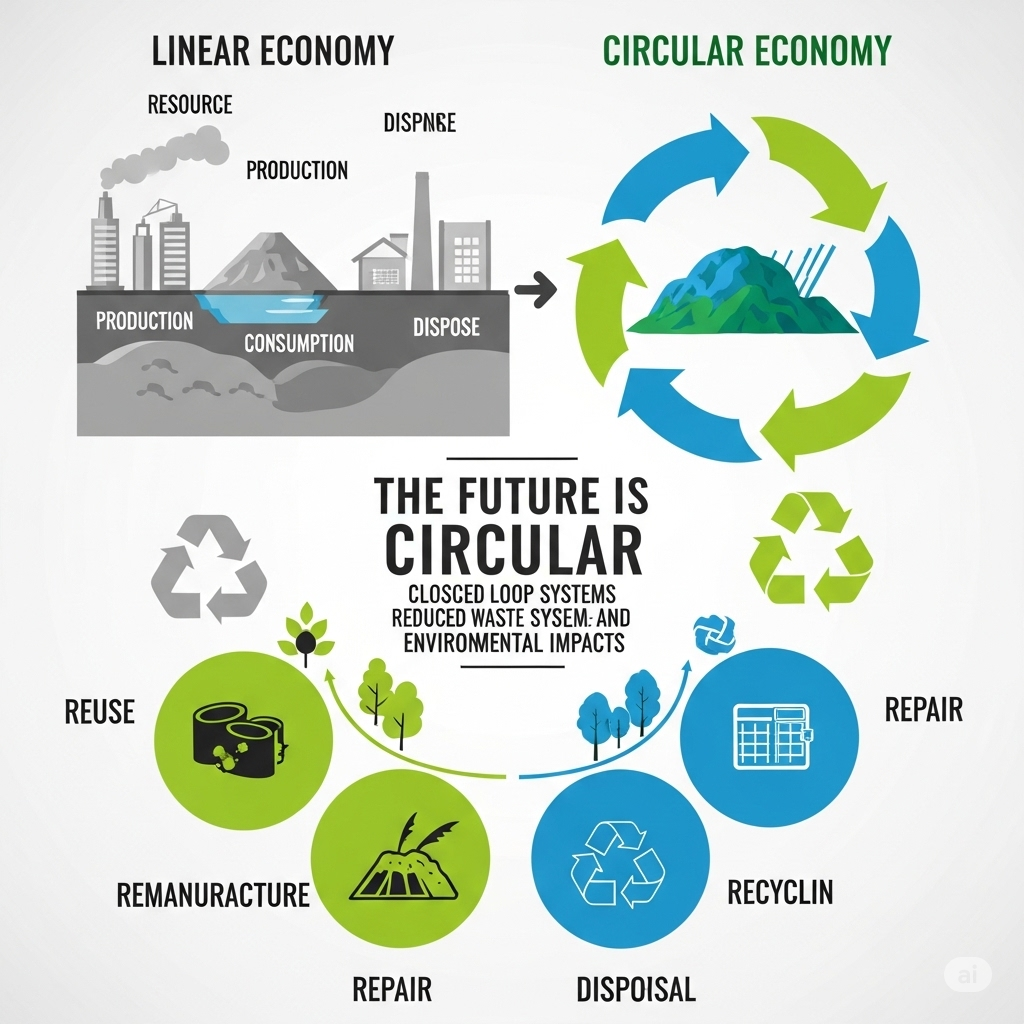Waste Reduction: Strategies, Benefits, and Impact for a Sustainable Future

Introduction
In a world grappling with climate change, resource scarcity, and overflowing landfills, waste reduction has become a critical pillar of sustainability. From households and schools to corporations and governments, the practice of reducing waste helps conserve resources, cut greenhouse gas emissions, and build a circular economy.
This comprehensive guide explores everything you need to know about waste reduction—what it is, why it matters, and actionable strategies to implement it effectively.
What is Waste Reduction?
Waste reduction is the process of minimizing the amount of waste generated, especially before it needs to be managed through recycling, composting, or landfilling. It focuses on:
-
Preventing waste at the source
-
Reusing items
-
Extending the lifecycle of materials
Unlike recycling, which deals with waste after it’s produced, waste reduction aims to prevent waste from being created in the first place.
More on source reduction: EPA – Sustainable Management of Materials
Why Waste Reduction Matters
There are several compelling reasons to focus on waste reduction:
🌍 Environmental Impact:
-
Reduces landfill usage and pollution
-
Conserves natural resources
-
Lowers carbon emissions from production and transport
-
Prevents plastic pollution in oceans
💰 Economic Benefits:
-
Saves money on packaging, production, and disposal
-
Reduces operational costs for businesses
-
Encourages efficient resource use
🧑🤝🧑 Social Advantages:
-
Promotes ethical consumption
-
Creates green jobs
-
Enhances community health and cleanliness
Explore stats on global waste: World Bank – What a Waste 2.0
Types of Waste Addressed by Waste Reduction
Understanding the kinds of waste we generate helps in implementing better reduction strategies.
Common Waste Streams:
-
Municipal solid waste (MSW) – everyday trash from households and businesses
-
Food waste – expired or discarded food
-
Packaging waste – plastics, cardboard, Styrofoam
-
E-waste – discarded electronics
-
Construction and demolition debris
-
Textile waste – fast fashion and unwanted clothes
Learn more: UNEP – Global Waste Management Outlook
Effective Waste Reduction Strategies
To successfully implement waste reduction, a combination of lifestyle changes, business practices, and community efforts is required.
1. Refuse Unnecessary Items
-
Say no to freebies you don’t need (e.g., plastic cutlery, flyers)
-
Avoid single-use items
Tip: Download Plastic-Free July resources to start refusing waste.
2. Reduce Consumption
-
Buy only what you need
-
Choose durable over disposable products
-
Buy in bulk to reduce packaging waste
Eco-friendly guide: Buy Me Once – Long-Lasting Products
3. Reuse and Repurpose
-
Repurpose glass jars, old clothing, and cardboard boxes
-
Shop second-hand
-
Participate in community swap events
Tool: Freecycle Network – Give and get free items locally
4. Repair Instead of Replacing
-
Fix appliances, electronics, and clothes
-
Attend repair cafes or learn DIY repairs
Get started: iFixit Repair Guides
5. Composting Organic Waste
-
Compost food scraps and yard waste at home
-
Join a community composting program
-
Use compost in your garden to reduce fertilizer use
Begin here: Compost Guide – How to Compost at Home
6. Digitalization to Reduce Paper
-
Use cloud storage and digital signatures
-
Request e-bills and digital receipts
-
Avoid printing unless necessary
Paper-saving practices: Treehugger – Go Paperless
7. Bulk and Zero-Waste Shopping
-
Bring your own containers to bulk stores
-
Choose products with minimal or recyclable packaging
-
Support zero-waste grocery stores
Find stores near you: Litterless – Zero Waste Grocery Guide
8. Sustainable Food Practices
-
Plan meals to avoid food waste
-
Store food properly
-
Use leftovers creatively
Learn more: Save the Food – Storage Tips
9. Green Business Practices
-
Adopt lean manufacturing
-
Use circular packaging solutions
-
Educate employees on sustainability
Corporate examples: Terracycle’s Zero Waste Boxes
Benefits of Waste Reduction in Daily Life
Household Level:
-
Less clutter and more organization
-
Healthier lifestyle from mindful consumption
-
Greater savings over time
School & Community Level:
-
Teaches youth about environmental responsibility
-
Creates shared community spaces like tool libraries
-
Reduces operational costs
Business Level:
-
Enhances brand image and customer loyalty
-
Attracts environmentally conscious customers
-
Complies with ESG (Environmental, Social, Governance) regulations
Common Myths About Waste Reduction
❌ “It’s too expensive to go zero-waste.”
✅ Many waste reduction strategies actually save money (e.g., reusing jars, repairing instead of buying new).
❌ “One person can’t make a difference.”
✅ Small changes by many people create big impacts—think plastic straw bans and reusable bags.
❌ “It takes too much time.”
✅ With the right tools (like compost bins and reusable shopping kits), waste reduction becomes part of your routine.
Real-World Examples of Waste Reduction Success
🌿 San Francisco, USA
-
Achieved over 80% waste diversion rate
-
Mandatory composting and recycling laws
🏙️ Seoul, South Korea
-
Smart bins and pay-as-you-throw policy
-
Reduced food waste by 30%
🛒 Loop by Terracycle
-
Delivers products in reusable packaging
-
Partners with major brands like Nestlé, PepsiCo, and Unilever
More case studies: Zero Waste International Alliance
Technologies Driving Waste Reduction
-
AI-powered waste sorting: Increases recycling efficiency
-
Blockchain in waste tracking: Transparency in supply chains
-
Smart composters: Turn food waste into soil automatically
-
Reusable packaging systems: Like Loop
Explore green tech: GreenBiz – Circular Economy Trends
Government and Policy Support
Many governments are creating incentives and legislation for waste reduction.
Policies Include:
-
Bans on single-use plastics
-
Mandatory recycling and composting
-
Pay-as-you-throw waste pricing
-
Extended producer responsibility (EPR) laws
Example: EU Circular Economy Action Plan
How to Start Waste Reduction Today
Starting your waste reduction journey doesn’t have to be overwhelming. Follow these steps:
Step-by-Step Plan:
-
Conduct a waste audit at home or work
-
Identify top waste-producing habits
-
Pick one change per week (e.g., bring your own bottle)
-
Track progress and adjust strategies
-
Join online or local zero-waste communities
Join the community: r/ZeroWaste subreddit
Conclusion
Waste reduction is more than just a trend—it’s a necessary step toward a sustainable future. With simple changes in our daily habits, businesses embracing circular models, and supportive government policies, we can drastically reduce our environmental footprint.
Whether you’re a student, parent, entrepreneur, or policymaker, the tools for waste reduction are within reach. The time to act is now.







1 Comment
After study a few of the weblog posts on your website now, and I actually like your approach of blogging. I bookmarked it to my bookmark web site list and might be checking again soon. Pls try my website online as nicely and let me know what you think.